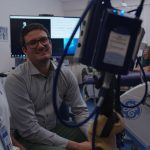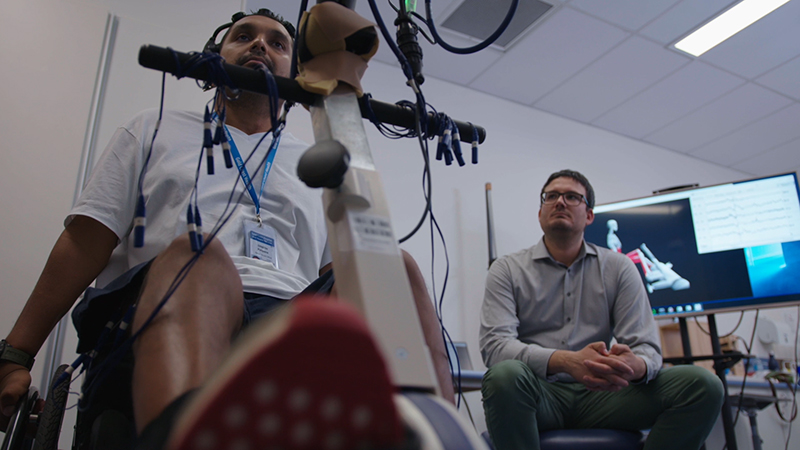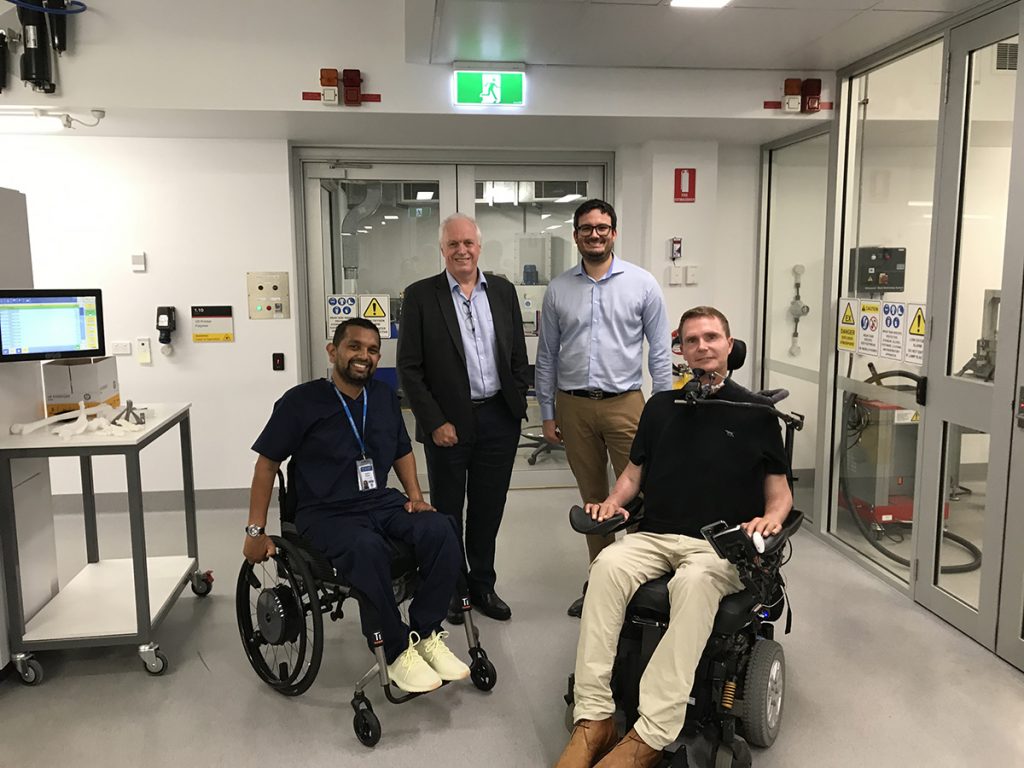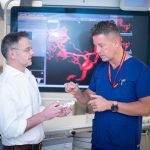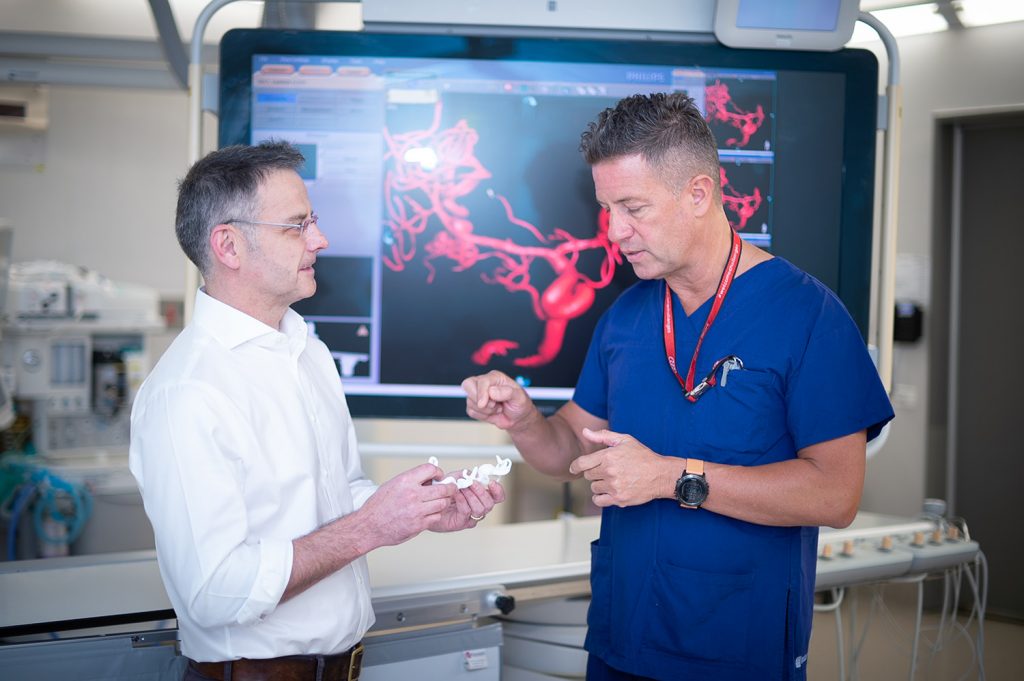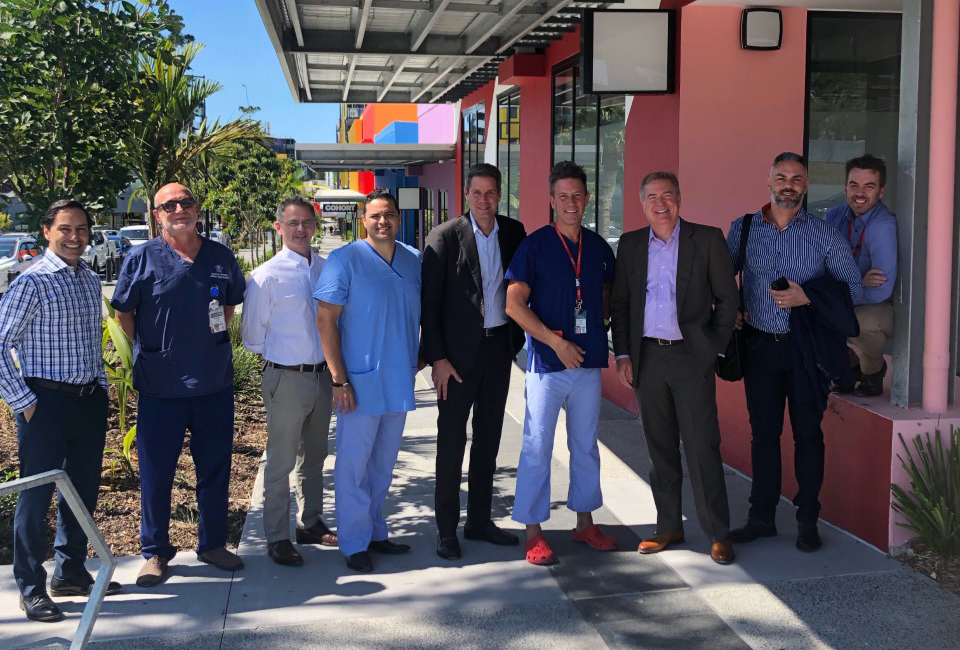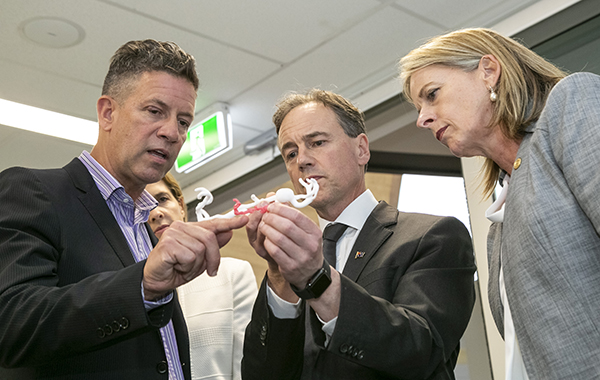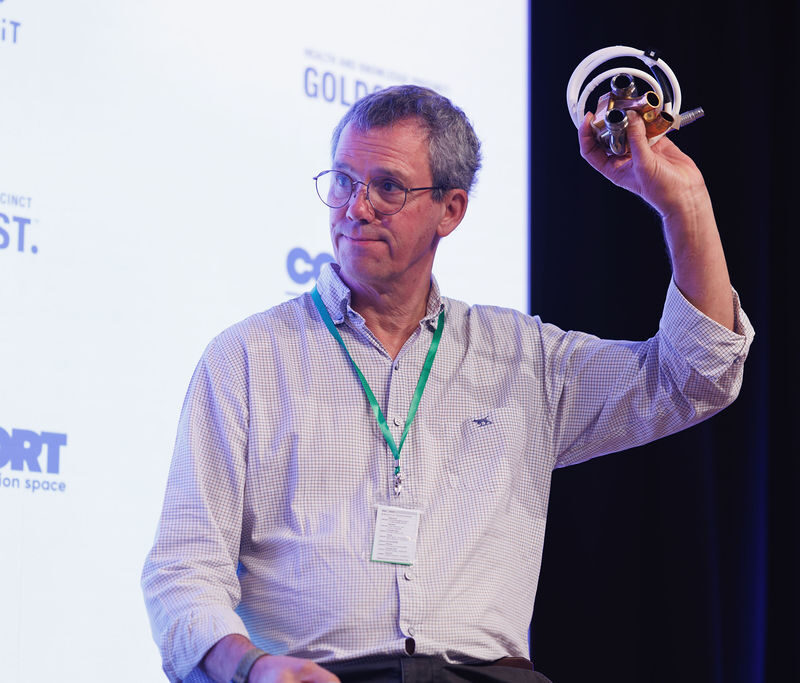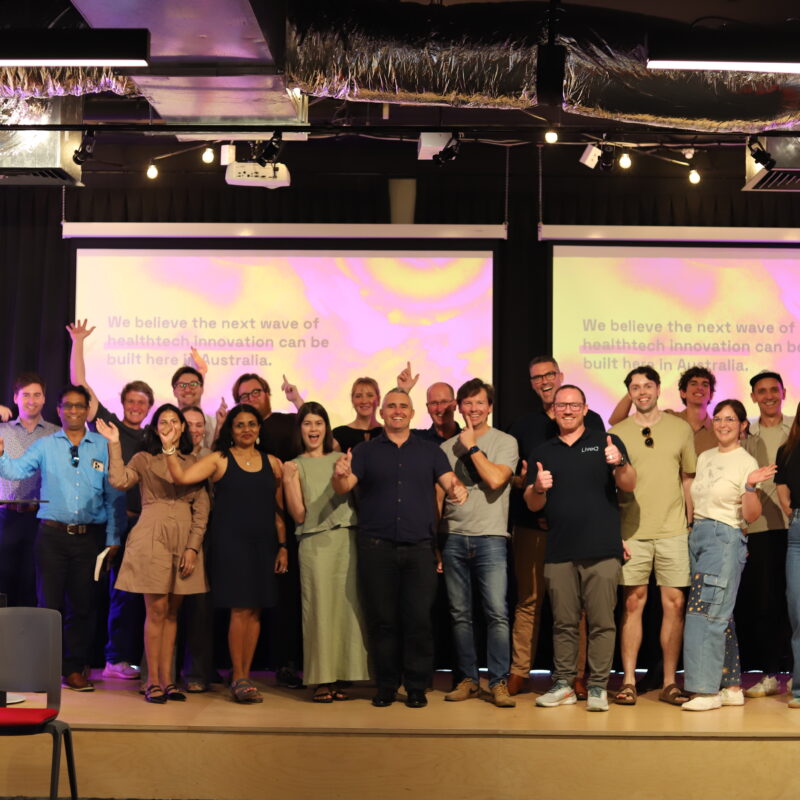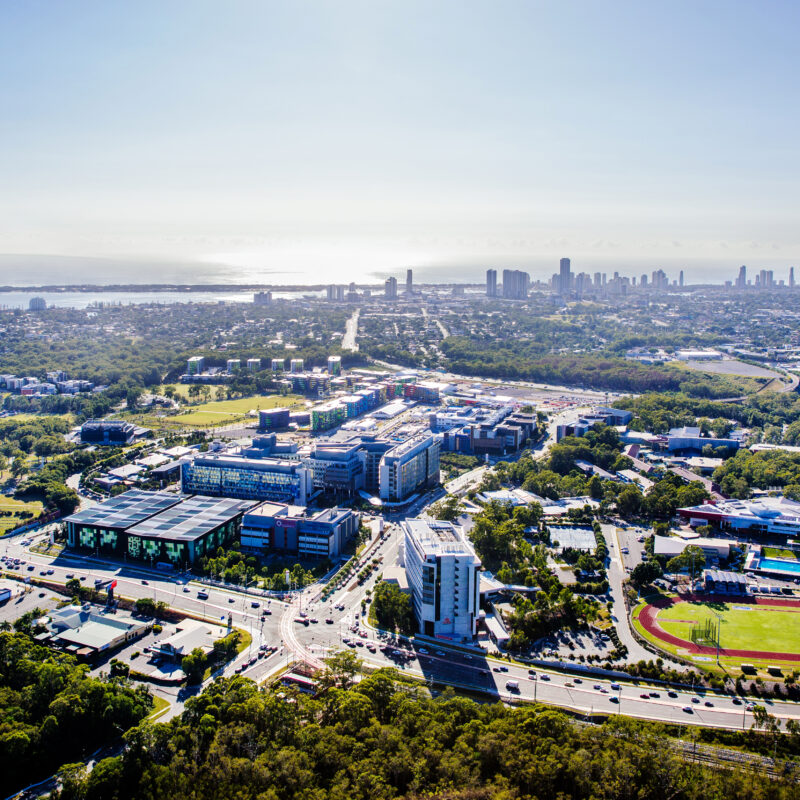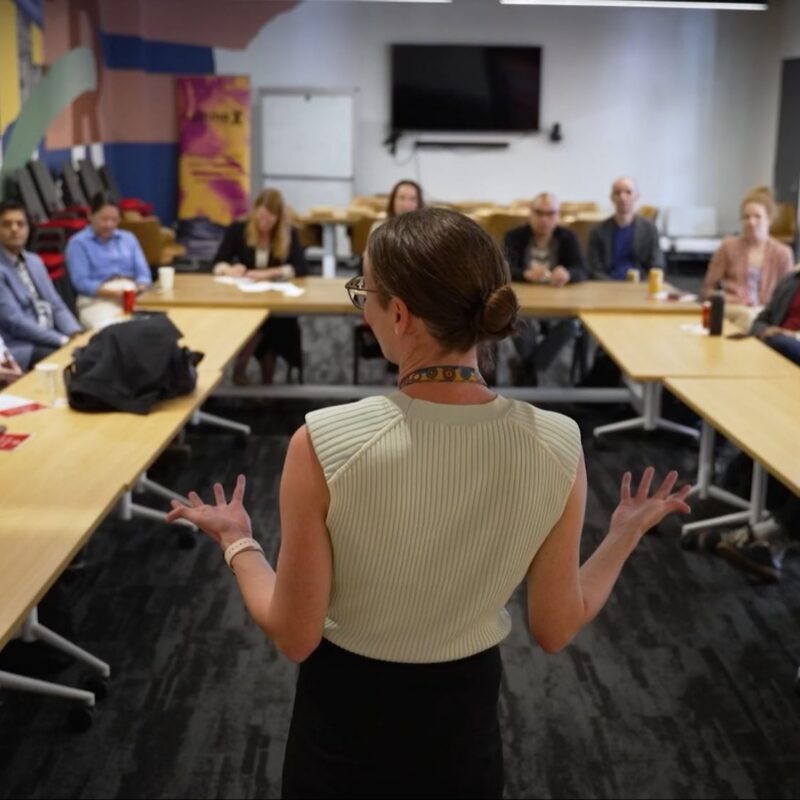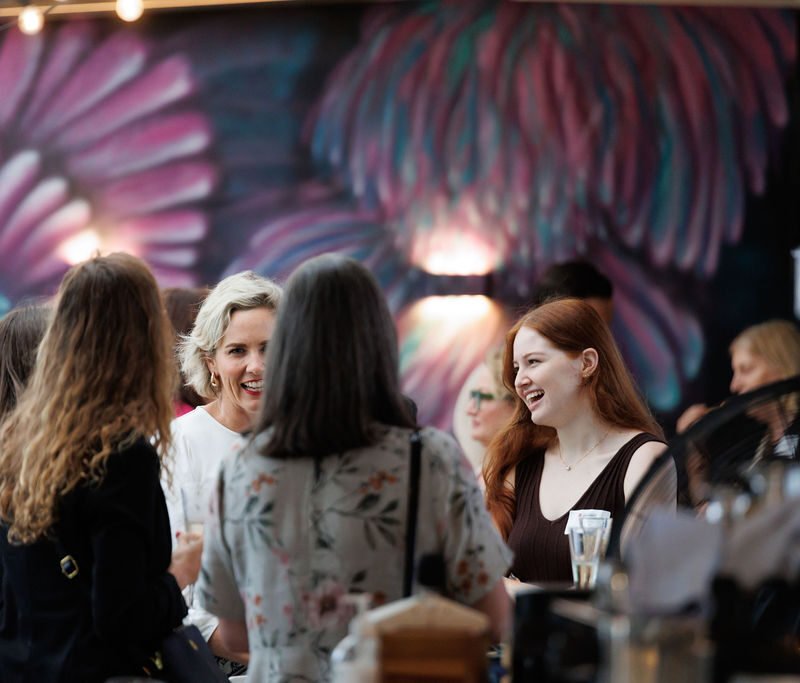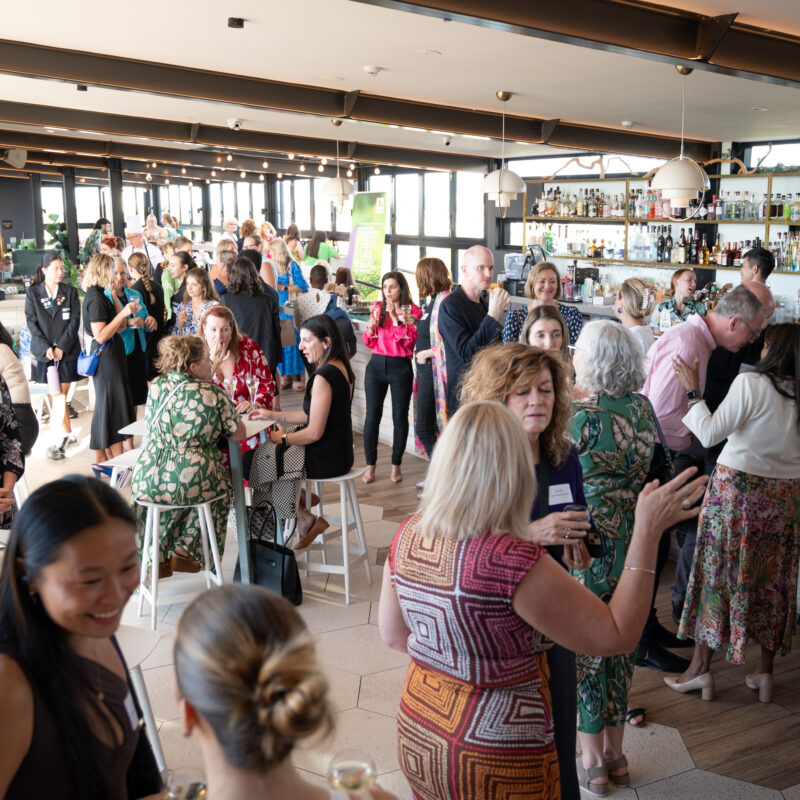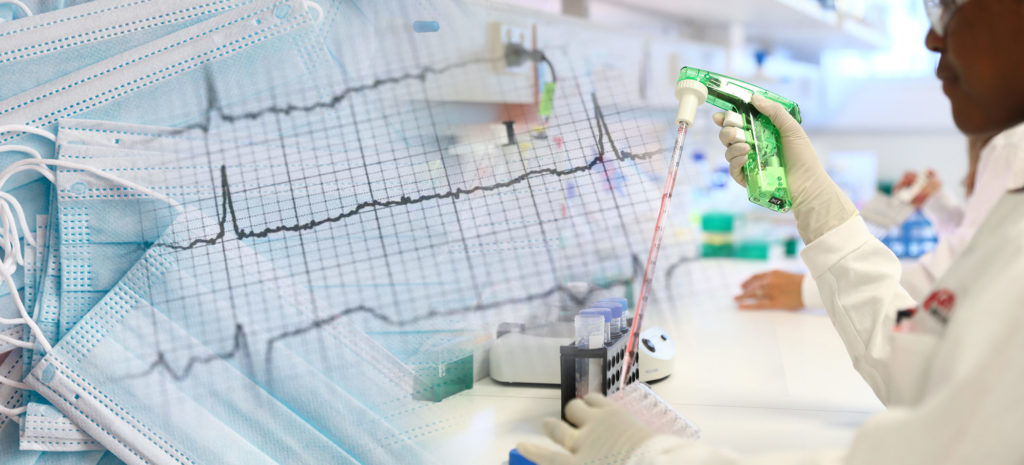
The Gold Coast Health and Knowledge Precinct (GCHKP) was spotlighted from the earliest days of the pandemic as some of Australia’s first COVID-19 patients were treated at the Gold Coast University Hospital (GCUH), including a tourist group from the source epicentre of Wuhan.
In the six months since Coronavirus reached our shores, our clinicians and researchers have stepped up to the pandemic plate – providing the best of care to patients, rolling out the public health response, working to develop vaccines and treatments and helping us respond to the many and far-reaching impacts on individuals, businesses, communities and our global future.
Amongst that massive effort, data scientists and clinicians are racing to develop a precision medicine data platform to help the sickest of COVID-19 patients survive.
A QUICK RESPONSE
January 30, or a COVID ‘decade’ ago, news was just breaking of Queensland’s first case of what we then referred to simply as Coronavirus. A 44-year-old Chinese man had been hospitalised, along with eight others in his tour group. Within days, four had tested positive. All have since recovered.
Fast-forward 6 weeks (or a COVID ‘year’), to March 12, and Hollywood arrived at the hospital as Elvis left the building – legendary actor Tom Hanks and his wife Rita Wilson were admitted to hospital after falling ill while he was filming the Baz Luhrmann Elvis Presley biopic at the Gold Coast’s Village Roadshow Studios. They became the world’s first celebrity COVID-19 cases, as filming was suspended and both the movie and real world locked down.
Among the healthcare heroes are hundreds of Griffith University-trained nurses, graduates of the nursing and midwifery program that in June was ranked number one in Australia, and number two in the world. It’s delivered in strong partnership with Gold Coast Health, which in April became the first full health service in Australia to receive prestigious international Magnet recognition for its nursing and midwifery service.
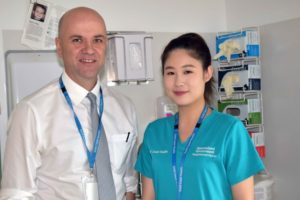
Renal nurse Catherine Li graduated from Griffith in 2016, having arrived in Australia in 2009. On the night of 29 January she left her shift and stepped into the fray to provide translation at the side of Dr John Gerrard, long-time Director of Infectious Diseases and Immunology, as they worked to calm the frightened Chinese patients who’d been placed in isolation.
“I helped the medical officers with their identifications, completed the admissions, helped with respiratory swabs and some observations, and settled them into our hospital – it’s teamwork,” Ms Li said.
“Catherine’s the unsung hero of the health service’s early handling of the visitors,” Dr Gerrard said.
Dr Gerrard, who last year received a Humanitarian Overseas Service Medal for establishing Australia’s first treatment centre in an Ebola hot zone and in January went to Japan to help with the early Coronavirus outbreak onboard the Diamond Princess cruise ship, said they’ve learned a lot since.
“Australia’s public health response to COVID-19 was exemplary. Closing the borders early, the rapid availability of laboratory testing and a strong public health system allowed us to be in our current position. Most countries were not as proactive, nor do they have the systems that we already had in place,” said Dr Gerrard.
“The isolation wards and negative pressure rooms at GCUH allowed us to practice a high level of hospital infection control.”
Clinical training and upskilling were also a key parts of Gold Coast Health’s COVID-19 response with more than 250 simulation training sessions undertaken in all parts of the service in April, more than the entire number of clinical simulations conducted in 2019.
Research impacted
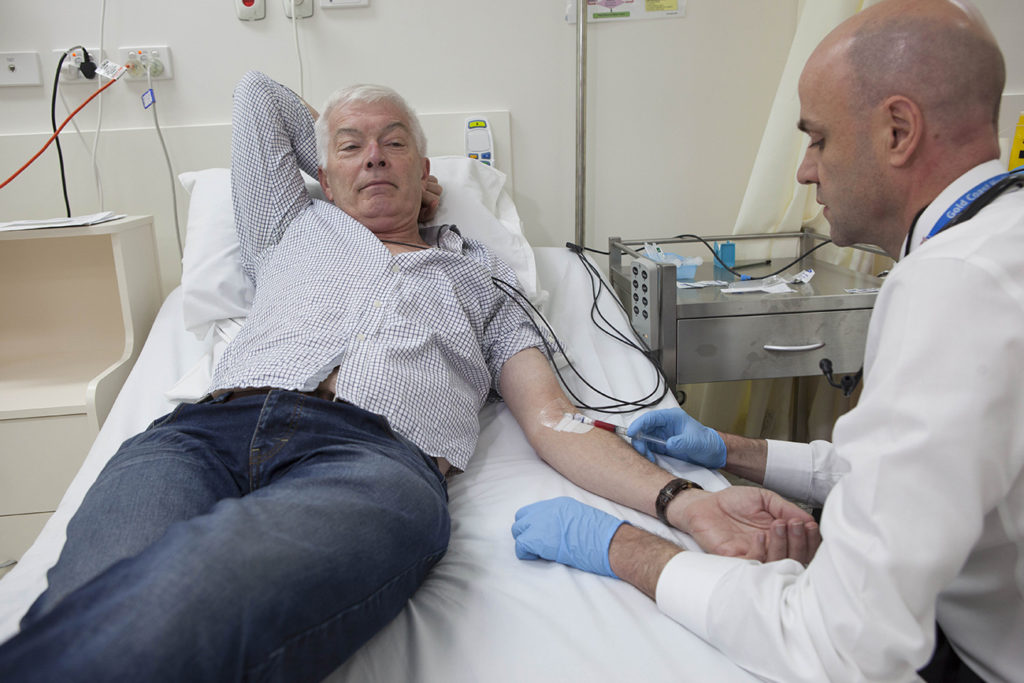
Dr Gerrard is also the hospital lead behind promising clinical trials for a malaria vaccine, developed by fellow Gold Coaster, Professor Michael Good AO, Principal Research Leader for the Precinct’s flagship Institute for Glycomics, at Griffith University.
From initial human trials in 2018, Phase 1 trials were progressing well, before the pandemic changed everything.
“Research on COVID-19 is considered essential and rightly so, but we ask how research on other diseases was deemed ‘non-essential’?” Professor Good wrote, in a co-authored paper for the American Journal of Tropical Medicine and Hygiene.
“For example, malaria infects over 200 million people and takes the lives of nearly half a million people, mostly young children, each year,” he argued, warning of long-term public health impacts.
“University research is impacted by fallout from the COVID-19 pandemic in much the same way as many other businesses,” according to Griffith’s Deputy Vice Chancellor (Research) Professor Mario Pinto, who called for support for research to pave a path out of the pandemic in an article for The Australian newspaper in May.
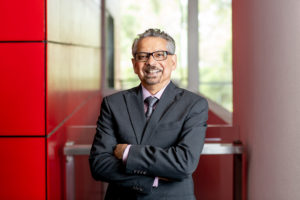
Research, whether it be in universities, industry or elsewhere, is one ‘business’ that we simply cannot let fail,” Professor Pinto, who chairs the Precinct’s Strategic Advisory Committee and has extensive overseas experience in research collaboration and innovation precincts, opined.
RESEARCHERS RESPOND
Professor Good, a past Chairman of the National Health and Medical Research Council (NHMRC), President of the Association of Australian Medical Research Institutes (AAMRI), Eureka Prize winner and Queensland ‘Great’, has now been appointed to the National COVID-19 Health and Research Advisory Committee. We can safely say we’re in ‘good’ hands.
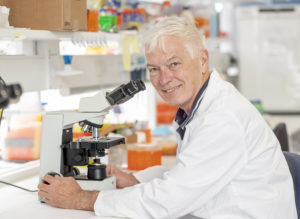
He’s also part of a multi-pronged Glycomics research effort exploring vaccines, treatments and diagnostics for the SARS-CoV-2 virus, with four expert teams led by Professor Good; Institute Director and founder Professor Mark von Itzstein AO; Deputy Director Professor Michael Jennings; and renowned HIV researcher, Professor Johnson Mak.
In June, another $200,000 was added to their research arsenal, jointly funded by the Queensland Government and the City of Gold Coast to support collaboration as part of the international consortium iCAIR®, led by Europe’s largest and most prestigious research organisation, Fraunhofer.
“This Australian-German alliance establishes a development platform that covers all the steps of a targeted drug development process, from identifying potential points of attack, right through to drug design and efficacy testing,” said Professor von Itzstein.

First out of the Griffith block with a promising rapid response vaccine platform was Professor Bernd Rehm, the German-born researcher from Griffith’s Centre for Cell Factories and Biopolymers, who back in mid-March signed a co-development MOU with Queensland biopharmaceutical company Luina Bio. Animal trials are underway.
Professor Suresh Mahalingam, from Griffith’s Menzies Health Institute Queensland on the Gold Coast, wasn’t far behind in sealing a deal with an existing partner, Indian Immunologicals Limited (IIL), a leading vaccines manufacturer based in Hyderabad, to develop a live-attenuated vaccine.
Others funded for COVID research include Professor Nigel McMillan, also based at Menzies on the Gold Coast, awarded more than $300,000 from the Australian government’s Medical Research Future Fund (MRFF) for studies into using gene silencing technologies to target the virus.
He’s been named in the top 10 Australian thought leaders during the pandemic – an era when epidemiologists and virologists have become media rock stars.
“For me this is what a university should be doing for the public, offering evidence-based advice and facts to inform them of the situation and the way forward,” said Professor McMillan.

RESPONDING TO PANDEMIC IMPACTS
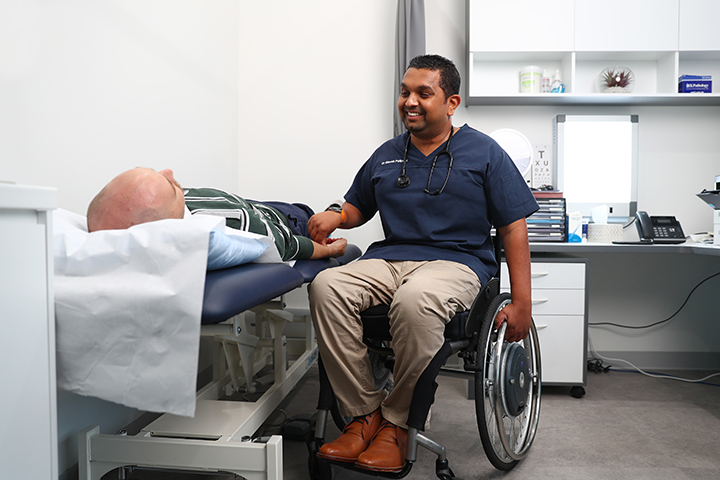
Griffith researcher and GCUH emergency doctor Dinesh Palipana OAM was straight on the front foot advocating for the disabled community, as his own research in advanced rehabilitation towards a cure for spinal cord injury stalled, like many other research projects.
Dr Palipana, who is Queensland’s first quadriplegic doctor, highlighted the vulnerability of disabled people during a public health crisis, bringing the issue of healthcare rationing into sharp focus.
“Society grappled with questions about how ventilators could be rationed between people with disabilities and those without,” Dr Palipana said. And he posed a critical question: should he automatically be disqualified from intensive care if he gets sick?
Sri Lankan born Dr Palipana, together with his co-lead on the BioSpine research program, Dr Claudio Pizzalato, a native of Italy, is still trialling the world-leading neuro-restoration technology, on himself. Unable to extend their clinical trial to other patients there’s still hope in the midst of a pandemic – Dr Palipana thinks he’s felt some sensation in his trunk for the first time since the accident that left him paralysed ten years ago.
Across the board, Griffith University researchers have responded with hope in the crisis, with a slew of social and psychological studies, economic research and analysis, studies into the environmental impacts of a planetary pandemic and insights into the new geopolitical world order.
They’ve chimed in with expert advice on coping with working from home and home-schooling, launched a national survey on social distancing, championed music therapy for mental health problems brought on by the pandemic (as alumnus Astrid Jorgensen’s pub choir went global as an online ‘couch choir’), and launched vital research into lockdown impacts on domestic and family violence, children’s anxiety and more.
“Much of the COVID-19 research response has been on informing policy to address issues such as domestic violence, child abuse, mental health and wellness, early childhood education, health disparities linked to criminal behaviour and social determinants of health,” Professor Pinto said.
Such policies and accompanying intervention strategies save education and health care costs and costs to the policing and justice system.”
By late April, Professor Scott Baum from Griffith’s Cities Research Institute, together with a colleague from the University of Newcastle, had ‘heat-mapped’ the hotspots in Australia, not of virus cases, but of economic disadvantage, as businesses shuttered and job losses mounted.
As a tourist hotspot, the Gold Coast economy has been heavily impacted by restrictions and the total loss of international tourists. Fortunately, strategic advice for recovery is close at hand with Griffith ranked number one in Australia and third globally for tourism research, and the Griffith Institute for Tourism (GIFT) based in the Precinct. Deputy Director Dr Sarah Gardiner was quick to develop a free tourism micro-credential to give struggling businesses a start.
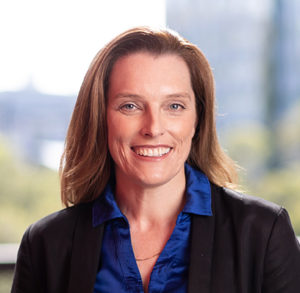
TOWARDS RECOVERY
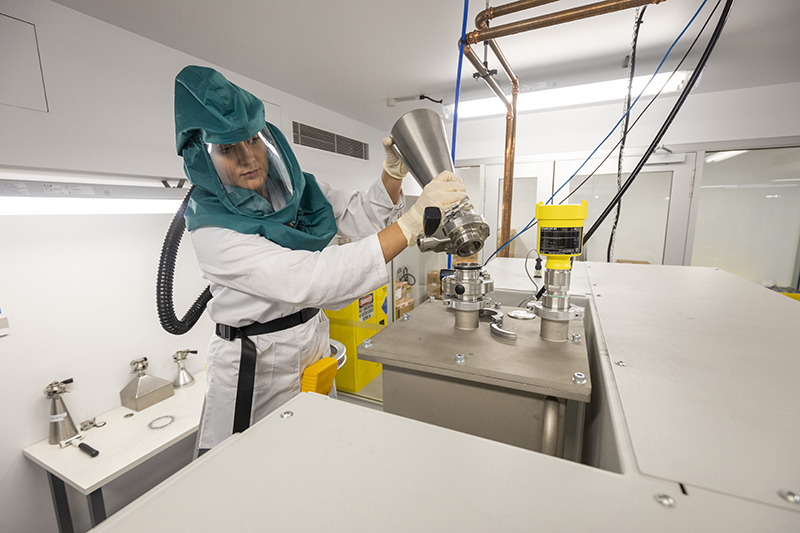
Professor Pinto, who arrived from Canada to start at Griffith in the eye of the pandemic storm in February, said that while the recovery would be led by SME’s in many sectors, they would need to be supported by university R&D.
“Research has a pivotal role in accelerating our recovery post COVID-19 given the impressive multiplier effect of high-quality research, which is often underestimated,” he said.
In the recovery our research will focus on the most impacted sectors such as tourism and hospitality, retail, transport and logistics, creative and performing arts.
It will extend into growth sectors including advanced manufacturing, rehabilitation services, agricultural practices, water management, climate change adaptation and mitigation, and communications.”
OPPORTUNITY KNOCKS
It hasn’t been all bad news – the Precinct celebrated Queen’s birthday honours for two deserving health stars – Griffith Pro-Vice Chancellor Health, Professor Sheena Reilly AM, who is also a leading paediatric health researcher, and Professor of Emergency Care Julia Crilley OAM, a dedicated nurse who became Gold Coast Health’s fourth Emergency Department honours recipient. June also saw rising Precinct star Angie Zhou, a Year 12 student from the Queensland Academy of Health Sciences (QAHS), make the Australian Biology team for the 2020 International Science Olympiad.
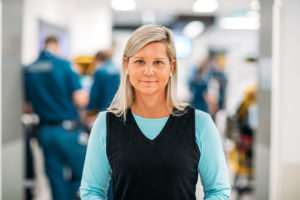
And even a pandemic can present opportunities – Griffith’s environmental researchers are cautiously optimistic about gains for biodiversity, for example.
Necessity is also proving the mother of invention, as Industrial Design lecturer Dr Sam Canning demonstrated by creating a prototype ventilator from everyday items, including a bike, that could be used to save lives in developing countries. Pre-pandemic, Dr Canning, whose research is part of Griffith’s Advanced Design and Prototyping Technologies Institute (ADaPT), was busy partnering with world-leading interventional neuroradiologists Dr Hal Rice and Dr Laeticia de Villiers from the GCUH to design and 3D print exact replicas of brain aneurysms in blood vessels, for use in surgery planning and specialised training. That’s quite the COVID pivot!
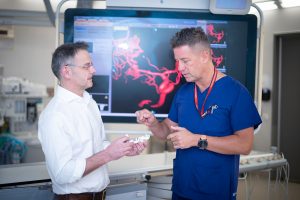
And where innovation can continue, there’s no stopping it – Doctors Rice and de Villiers have begun enrolling patients in a world-first trial of a unique robotic arm used during brain aneurysm treatments at GCUH.
BUSINESS INNOVATION
There’s been service innovation too – Gold Coast Health has extensively ramped up telehealth services, while Griffith has moved almost all learning online and introduced new, in-demand courses. On the back of the rapid pivot, along with its major support for students, the university has seen an almost 50% increase in second trimester domestic enrollments.
The Precinct’s Cohort innovation hub barely missed a beat in supporting members and SMEs all over the Gold Coast, transferring almost all their programs to digital delivery, with expanded webinars and podcasts and the launch of Cohort TV, to help businesses survive to thrive on the other side.
Cohort tenant Virtual Mgr, a compliance-based software company that specialises in enterprise-level solutions to manage cleaning, food safety and other risk and compliance issues, quickly grasped the COVID opportunity to develop cheaper, more agile software for smaller businesses – even launching in the UK, and employing more staff. They’ve now deployed a new application to help the Australian Supercars run a COVID-safe racing series.
Early May saw Cohort’s new PC1 and PC2 labs open, with Cluster Biotech, a biotech scale-up company focused on probiotic technologies, bravely taking a mid-pandemic plunge into a new business location and operating model.
AI TO POWER RECOVERY
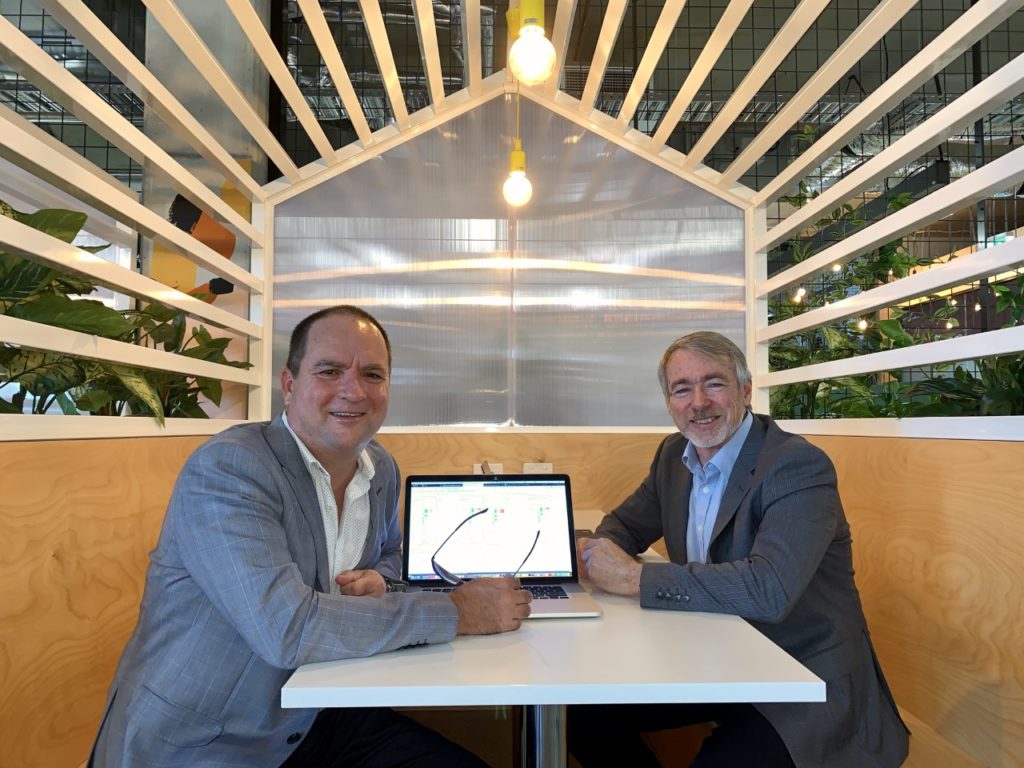
Perhaps the most exciting positive is how the pandemic has catalysed the amazing potential of Artificial Intelligence (AI) in healthcare.
Data-driven technology company Datarwe, the brainchild of innovators Dr Kelvin Ross, Board Member of the Queensland Government’s new $5.5 million AI Hub, and Dr Brent Richards, Medical Director of Innovation and Director of Critical Care Research at GCUH, has just set up a data lab at Cohort. Datarwe is funded through a $1.5 million Advance Queensland grant to develop a Precision Medicine Data Platform that gathers data from multiple devices to support doctors and nurses in making informed decisions on critical patient care.
“We are currently working around the clock with Queensland Health to add a COVID-19 Rapid Response dashboard to the Datarwe platform,” Dr Ross said.
The investment by Advance Queensland is also a critical step towards making Queensland a global hub for medical AI research and associated technology firms.”
With their initial focus on the close monitoring of patients at the GCUH Intensive Care Unit (ICU), they hope to expand into 250 hospitals across the Asia Pacific, as they enable clinicians and medical researchers to rapidly collaborate to develop next-generation AI clinical diagnostic tools.
It’s innovation that couldn’t be more needed right now – just ask COVID-19 patients like 81-year-old Richard Misior, who spent 77 days in the GCUH ICU, or 61 year old retired police officer Kim Watkins, who was the first person in Australia to successfully come off a ventilator.
NEW DEVELOPMENTS FOR A POST-PANDEMIC FUTURE
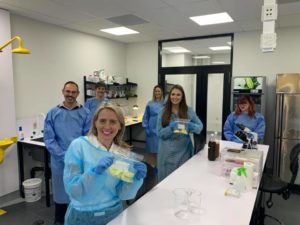
New Queensland Minister for State Development, Tourism and Innovation, Hon Kate Jones, made her first trip out of isolation in mid-May to meet the innovators at Cluster Biotech, and to announce the final design stage of an $80 million development to be known as Proxima, which represents a truly exciting show of confidence in these ‘unprecedented’ times.
Fittingly, with the world facing an uncertain future, the Precinct’s first private development within the 9.5 hectare Lumina commercial cluster will focus on the next generation. Proxima will incorporate integrated childcare for kids with special needs, alongside paediatric research and child allied health services.

Professor Pinto is very much looking to the future and is positive, despite the difficulties and disruptions that still lay ahead.
“Excellent research combined with excellent teaching contributes to reskilling of the public to generate the workforce of the future that will assist in social and economic recovery from COVID-19 and other threats. “
With five months still to go in a year that seemingly will never end, and even with greater Melbourne back in lockdown ‘iso’ as the rest of Australia holds a collective breath, Aussies have typically abbreviated the virus moniker COVID-19 (so last year) to plain COVID, as we implement COVID-safe plans and dare to dream of life beyond COVID.
Beyond the COVID horizon, the Gold Coast Health and Knowledge Precinct looks well positioned to play its part in a brighter post-pandemic future.

